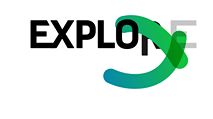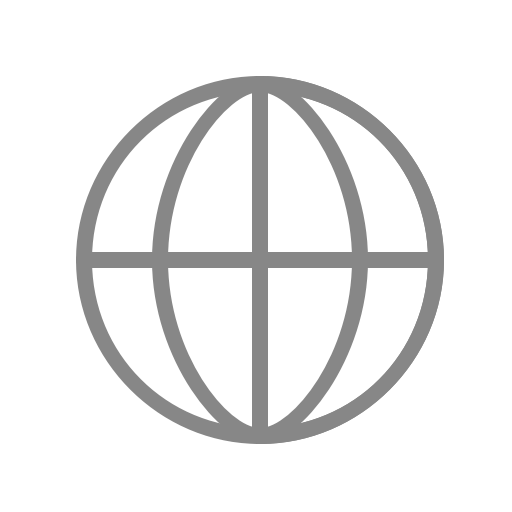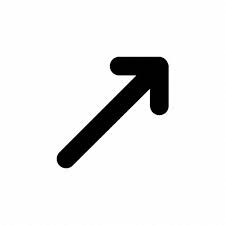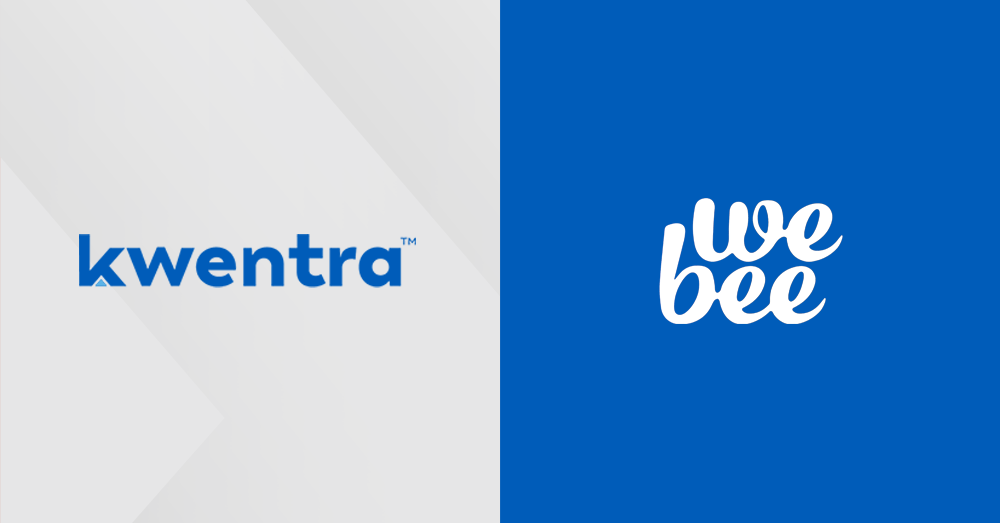

Room rates used to be the main revenue lever for hotels, but “used to be” is the key phrase. Rising costs, shifting guest behavior and more complex distribution models have forced hoteliers to look past the room rate and toward the new strategy on the scene: total revenue management.
What does that mean? It is about thinking beyond occupancy to optimize every revenue stream, from spa bookings and dining to late checkouts and upgrades. This guide walks you through how hotel revenue management has changed, the metrics that matter most and the advanced tools (like AI and automation) reshaping what is possible.
Key takeaways
Modern revenue management is about total profitability, not just rooms
Advanced forecasting, segmentation and pricing tactics are essential to stay competitive
Technology, especially AI, is transforming how hoteliers optimize revenue opportunities
Canary’s Guest Engagement Platform maximizes hotel revenue at every guest touchpoint
What is revenue management in hotels? A quick refresher
Revenue management in the hotel industry is the strategic process of maximizing a property’s profitability through adjusting room rates. This is achieved by selling the right room, to the right guest, at the right time, for the right price and through the right channel.
Traditional revenue management is where data analysis and pricing strategy meet. It requires hoteliers to anticipate demand, adjust rates dynamically and make the most out of every available room. It is not just about charging more, it is about charging smarter.
With revenue management, hoteliers are always trying to find the sweet spot between occupancy and rates. This makes it possible for your hotel to:
Forecast demand with accuracy
Adjust pricing based on real-time market conditions and events
Optimize inventory across direct and third-party channels
Increase RevPAR (revenue per available room) and overall profitability
Being a revenue management master is what sets you up to capture the most money possible for each reservation and stay ahead of the competition.
Why is revenue management important? The benefits of hotel revenue management
Revenue management is important because it drives smarter decisions about how to price rooms. When data guides the rates you set, you are able to maximize profit, improve forecasting and operate strategically in a crowded market.
It maximizes profit, not just occupancy
Selling out every night is not actually the most successful version of operating your hotel. Selling out at the most profitable rate is. Revenue management gives you the data to balance occupancy with rate optimization to drive revenue, even during shoulder seasons or low demand periods.
It improves demand forecasting
Have you ever forgotten to check your neighborhood’s event calendar, only to realize you could have charged more for a big festival weekend ahead? Revenue management makes this error a thing of the past. By analyzing historical data, market trends, booking patterns and local demand spikes, it is possible to make informed guesses about future demand. Then you can set rates accordingly and avoid leaving money on the table.
It gives your hotel a competitive advantage
If potential guests are comparing you against a similar hotel across the street, price is a big factor in their final decision. Revenue management helps you understand your market position, comp set pricing and guest behavior so you can be agile in adjusting your rates to attract more travelers.
It supports data driven decisions across the business
Revenue management gives you better insights for every decision across your business. The information you gain can be applied across operations, letting you optimize everything from marketing and distribution to staffing and operations. This moves you from a reactive state to a proactive one so you can make choices with clarity.
Important KPIs and metrics for tracking revenue management
Trusting your gut is great, but successful revenue management relies on more than just instinct. That is why tracking the right KPIs is one of the most important elements of revenue management.
Performance metrics are essential to understanding and optimizing your hotel’s revenue management strategy. The three most important ones are occupancy rate, Average Daily Rate (ADR) and Revenue per Available Room (RevPAR).
Occupancy rate
Occupancy rate measures the percentage of available rooms sold during a specific time period. It is a foundational metric that gives you visibility into demand and booking trends.
Formula:
( Rooms Sold ÷ Rooms Available ) × 100
Example:
If your hotel has 100 rooms and you sell 85 of them on a given night:
( 85 ÷ 100 ) × 100 = 85%
High occupancy might suggest strong demand, but it does not always mean strong revenue. That is why it is important to evaluate it alongside ADR and RevPAR.
Average daily rate (ADR)
Average Daily Rate (ADR) reflects the average amount of revenue earned per occupied room. It is a key indicator of pricing strategy and guest spend.
Formula:
Total Room Revenue ÷ Number of Rooms Sold
Example:
If you sold 85 rooms and earned $12,750 in room revenue:
$12,750 ÷ 85 = $150 ADR
If your occupancy is solid but ADR is low, it could indicate missed revenue opportunities. Conversely, a high ADR with very low occupancy might suggest pricing that is too aggressive for your market.
Revenue per available room (RevPAR)
Revenue per Available Room blends occupancy and ADR into one powerful metric. It shows how well you are turning available inventory into revenue, regardless of how many rooms are actually occupied.
Formula:
RevPAR = ADR × Occupancy Rate
Example:
100 rooms, 85 percent occupancy, ADR of $150:
RevPAR = 150 × 0.85 = $127.50, or
RevPAR = $12,750 ÷ 100 = $127.50
RevPAR is often considered one of the most important performance metrics in hotel revenue management. By considering both occupancy and ADR data, you reveal how efficiently your hotel is monetizing its inventory, not just booking it.
Calculations for hotel revenue management (summary)
Occupancy rate
What it measures: percentage of rooms sold during a specific period
Formula: (Rooms Sold ÷ Rooms Available) × 100
Why it matters: indicates demand and booking trends
Average daily rate (ADR)
What it measures: average revenue earned per occupied room
Formula: Total Room Revenue ÷ Rooms Sold
Why it matters: reflects how much guests are paying for rooms
Revenue per available room (RevPAR)
What it measures: combines occupancy and ADR into one metric
Formula: ADR × Occupancy Rate
Why it matters: reveals how efficiently a hotel turns room inventory into revenue
The evolution: from room rate tactics to a total revenue strategy
Traditional hotel revenue strategies focus exclusively on room sales. But today’s most successful properties are not just filling rooms, they are optimizing for profitability at every guest touchpoint. That is where total revenue management comes in.
What is total revenue management?
Total revenue management is a modern approach to hotel revenue that looks beyond room rates. It optimizes the profitability of all revenue streams, including:
Food and beverage
Spa services
Events
Retail
Upsells and add ons
You might know these revenue streams as ancillary revenue, a portion of the hospitality market that is expected to reach 10.2 billion by 2033. By capitalizing on ancillary revenue, hotels can capture more wallet share from every guest and make smarter operational decisions across departments.
KPIs for a total revenue strategy: TRevPAR and GOPPAR
Metrics like RevPAR offer valuable insight into pricing and occupancy trends, but they tell only part of the story. For example:
The guest who books a standard room but spends heavily on spa treatments
Families who eat most meals at the poolside restaurant
Instead of managing room rates in isolation, total revenue management uses cross departmental data to consider both the cost of the reservation and what guests spend once they arrive.
To track success, leading hotels use:
Total Revenue per Available Room (TRevPAR)
Gross Operating Profit per Available Room (GOPPAR)
Total revenue per available room (TRevPAR)
TRevPAR expands on RevPAR by incorporating all revenue generated per available room, not just room revenue. This includes:
Food and beverage
Spa services
Parking
Early check ins
Late check outs
Other add ons
Formula:
Total Revenue from All Sources ÷ Total Rooms Available
Example:
100 rooms, in one day:
Room Revenue: $12,000
F and B Revenue: $3,000
Spa and ancillaries: $2,000
Total Revenue: $17,000
TRevPAR = $17,000 ÷ 100 = $170
TRevPAR gives you a complete view of total guest value and highlights which departments or services contribute most to overall revenue.
Gross operating profit per available room (GOPPAR)
GOPPAR measures profitability by factoring in operating expenses. It tells you how much profit your hotel is earning per available room.
Formula:
Gross Operating Profit ÷ Total Rooms Available
Example:
Using the above example, if operating expenses total $10,000, then:
Gross Operating Profit = $17,000 - $10,000 = $7,000
GOPPAR = $7,000 ÷ 100 = $70
GOPPAR helps you focus on sustainable, margin driven growth, not just top line performance.
The core elements of total revenue management
An effective total revenue management strategy contains a handful of core elements.
Market and customer segmentation
Divide guests into segments based on:
Booking behavior
Demographics
Purpose of travel
Budget and rate sensitivity
Group size
Interest in amenities
This allows tailored pricing, packages and promotions that drive more profitable bookings.
Forecasting supply and demand
Forecasting involves analyzing historical data, current trends and upcoming events to predict future demand and occupancy. Benefits include:
Setting optimal pricing in advance
Planning staffing and resources
Capitalizing on peak periods
Avoiding missed opportunities in slow seasons
Pricing and inventory control
Dynamic pricing lets you adjust room rates in real time based on:
Market demand
Booking pace
Competitor pricing
Other signals
Inventory control means managing:
How many rooms are available at each price point
On each channel
For each segment
This includes rules like length of stay restrictions or blackout dates.
Channel management
Optimize your mix of channels:
Direct website
Travel agents
OTAs
GDS
The goal is to sell more rooms through high margin channels while maintaining visibility across third parties. Keep pricing and availability consistent and avoid revenue leakage or over reliance on expensive intermediaries.
Advanced hotel revenue management strategies and levers
Once the foundation is in place, more advanced tactics help you stay ahead of the competition. Four of the most powerful strategic levers are:
Dynamic and continuous pricing
Markets change rapidly, and static pricing holds you back. Dynamic pricing:
Monitors demand shifts, booking pace, market trends and competitor pricing
Adjusts rates in real time
Continuous dynamic pricing can generate thousands of possible price points, updating on a near continuous basis, keeping rates competitive and profitable without extra labor.
Sophisticated forecasting
With machine learning and predictive modeling, forecasting now goes beyond simple occupancy predictions. Advanced models anticipate:
Booking windows by segment
Rate sensitivity by channel
Market compression during events
Shifts in guest behavior and preferences
AI powered tools and PMS or RMS integrations increase accuracy and agility.
Strategic channel management and optimization
Key tactics:
Prioritize direct bookings via SEO, metasearch, webchat and conversion optimized UX
Monitor OTA commissions and adjust rates
Use channel specific promotions strategically
Maintain rate parity
This reduces dependency on high cost channels and increases net revenue per booking.
Maximizing ancillary revenue and upselling
Upselling and cross selling are key for total revenue:
Upsell room types pre or during check in
Monetize early check ins and late check outs
Cross sell spa, F and B, tours, parking and more
Create packages combining multiple services
How to naturally add upselling to the guest journey
Personalization is key. Canary’s Dynamic Upsells:
Automate upselling by sending personalized offers at relevant times
Use guest profiles, booking data and availability
Boost ancillary revenue without adding front desk workload
Canary’s Digital Compendium supports in stay upsell discovery by showcasing relevant offers when guests seek information.
The hotel technology stack: revenue management solutions and AI
The best strategies rely on evolving plans, and technology is essential.
The role of revenue management systems (RMS)
An RMS helps hotels:
Forecast demand
Adjust rates dynamically
Control inventory across channels
Analyze segmentation and channel performance
RMS is central but only one piece. Canary’s hotel revenue management tools integrate with RMS to extend strategy across the full guest journey, including pre arrival offers, in stay upgrades and departure add ons.
The guest engagement and revenue engine
Engagement tools like AI Webchat, AI Guest Messaging and AI Voice:
Keep the website acting as a 24 or 7 conversion hub, and if guests navigate away, capture contact details for re engagement
Answer questions instantly
Send targeted offers in real time
Turn guest communication into revenue opportunities
The impact of AI on hotel revenue management
AI is transforming revenue strategy by enabling:
More accurate forecasting using real time data, competitor pricing, events and weather
Personalization at scale with tailored upsell and cross sell offers
Task automation, with AI answering guest inquiries and driving direct bookings
The result is saving time, scaling personalization and turning more interactions into transactions while improving guest satisfaction.
A revenue management example: Williamsburg Lodge
The property: Williamsburg Lodge, near Colonial Williamsburg, with upscale comfort but under optimized upselling.
The challenge:
Nearly 30 room types, making upgrades hard to explain at the front desk. No reliable upsell tracking.
The shift:
After implementing Canary’s Dynamic Upsells:
Offers are sent before arrival
Guests browse and book upgrades and amenities via mobile
There is no front desk pressure and fewer missed opportunities
The results:
Upsell revenue grew from about $5,000 per year to about $6,000 per month
More than $100,000 in two years
Faster check ins
Higher conversions on upgrades and add ons
Minimal staff effort, as staff simply approve requests in the dashboard
Key considerations for your revenue management operations
Even advanced strategies need solid execution:
Clear, cross departmental workflows
Regular revenue management meetings
Defined roles and responsibilities
Consistent, accurate data across systems
Align teams, processes and systems for consistent performance.
Building your hotel’s advanced strategy: checklist
Define your goals (beyond RevPAR)
Set unique, measurable goals tied to total revenue, guest spend, profit or conversion.Consolidate your data sources
Ensure PMS, RMS, POS and guest engagement tools share accurate, centralized data.Evaluate your technology stack (RMS and guest engagement)
Make sure tools integrate and support dynamic pricing, upsells, messaging and personalization.Enable your team with training
Clarify roles and build buy in across departments.Test, measure and iterate
Refine pricing rules, promotions and upsell tactics based on results.
Further learning: hotel revenue management books
Elastic - Leonard Mlodinow
Travel Industry Economics - Harold Vogel
Revenue Superstar!: The Simple Rules of Hotel Revenue Management - Johan Hammer
Evolving Dynamics: From Revenue Management to Revenue Strategy - Kathleen Cullen
The future of hotel revenue management is total, automated and guest centric
Modern hotel revenue management is no longer just about setting the right room rate. It is a holistic strategy combining:
Data collection
Dynamic pricing
Forecasting
Guest centric engagement
Top performing hotels now focus on profitability at every guest touchpoint, from pre arrival upsells to in stay purchases to post stay loyalty.
This level of precision requires an integrated stack that unites:
RMS
PMS
Guest messaging
Upselling
AI automation
Ready to build a total revenue strategy? Canary’s Guest Management Platform helps maximize hotel profitability.
FAQs
What is revenue management in hotels?
Revenue management in hotels is the strategic practice of selling the right room to the right guest at the right time for the right price. It uses data and analytics to forecast demand, optimize pricing and maximize total profitability beyond just thinking about occupancy.
Is there a comparison of forecasting methods for hotel revenue management?
Common forecasting methods include historical data analysis, booking curve forecasting, regression models and AI powered predictive analytics. AI driven forecasting is quickly becoming the standard because it factors in real time variables like market trends and events.
How do you choose the best revenue management software for a hotel?
Start by assessing your property’s needs. Then look for software that:
Integrates with your PMS and CRS
Offers intuitive revenue management analytics
Supports your pricing and inventory strategy
Enables real time automation and forecasting
Tools like Canary’s Guest Management Platform complement RMS platforms by driving ancillary revenue and enhancing guest engagement.
What is a hotel revenue management system?
A hotel revenue management system (RMS) is a software platform that helps hoteliers make data driven pricing and inventory decisions. It uses algorithms to forecast demand and recommend optimal rates based on market conditions, competitor pricing, historical data and booking trends.
How does revenue management differ between hotels and restaurants?
Hotels manage perishable room inventory over 24 hour cycles, while restaurants manage seats and table turns in shorter time blocks. Hotels often rely more on dynamic pricing and channel distribution, while restaurants focus on table optimization, menu engineering and reservation pacing.
How do you calculate hotel revenue management performance?
Use key KPIs:
ADR (Average Daily Rate) = Room Revenue ÷ Rooms Sold
Occupancy Rate = Rooms Sold ÷ Rooms Available
RevPAR (Revenue per Available Room) = ADR × Occupancy Rate
TRevPAR (Total Revenue per Available Room) = Total Revenue ÷ Rooms Available\
GOPPAR (Gross Operating Profit per Available Room) = GOP ÷ Rooms Available
Tracking and optimizing these metrics over time helps ensure maximum profitability and strategic alignment.

